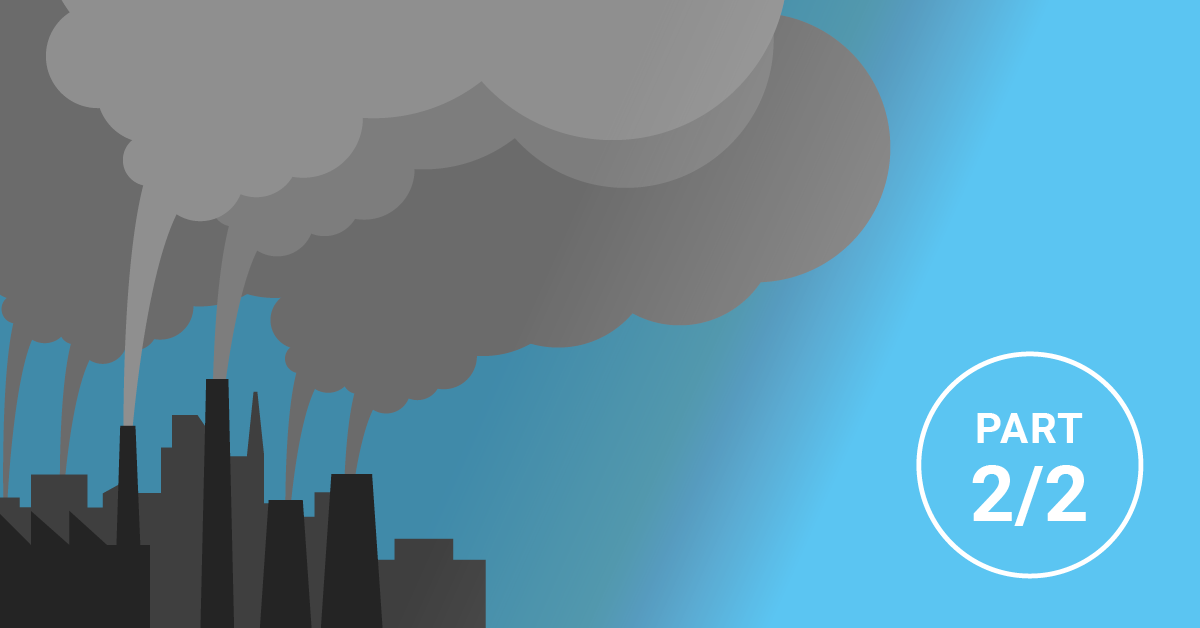Fine dust is like passive smoking: no one’s comfortable with it, but the exact effects are arguable. In Part 1 of this series, we discussed the results of recent medical studies. For Part 2, we’ll be looking at guidelines the cities of tomorrow should consider. And we’ll be posting in-depth commentary from our IoT expert Christian Zeh on this topic soon.
Legal Regulations on Air Pollution
The particulate matter components PM10 and PM2.5 came to the forefront of air pollution control policy in the mid-1990s due to new findings on their effects on human health. Since then, there have been some groundbreaking decisions and laws made in Europe at both national and European levels. The EU Directive 2008/50/EC, for instance, confirms the limit values for PM10 that have been in force since 2005, and lays down new air quality standards for PM2.5.
Did such legal regulations produce their desired effects in Europe? Yes and no. Whereas in the last decade of the 20th century the total and fine dust emissions were drastically reduced in Germany, the decrease has slowed down since then, both in terms of PM10 and PM2.5. For the coming years, dust concentrations in the air are expected to continue to decrease slowly. Further measures are therefore required to continue reducing PM pollution.
An Evolution of Fine Dust Sensors
In many European cities there is already a broad, and for the most part sensible, network of fine dust sensors. However, there are often significant differences in the quality of certain sensors at long-term measuring stations. As would be expected, many Asian countries have developed revolutionary sensors for measuring air quality in urban areas, partly because of their own concerns. While in the EU particulate matter values of 25 micrograms per cubic meter of air are a reasonably average guideline value today, according to a recent article in the medical journal Lancet, the average particulate matter load in many Asian cities is more than four times as high on average. So it’s hardly surprising that particulate matter sensors are among the best-selling electrical products to private customers in China.
For commercial building automation systems, however, there have been virtually no such sensors seen so far. In view of the extremely poor air quality in China's major cities, Siemens has developed such a sensor for integration into home automation systems. This sensor, which is the size of a pack of cigarettes, was recently launched on the market. The new sensor can be mounted on a wall and regularly checks the level of fine dust in the ambient air through a small fan. The PM2.5 concentration is measured precisely with a laser diode that senses light scattering on fine dust particles. The sensor is calibrated to measure the important PM2.5 values, but also estimates the concentration of PM10 fine dust.
Laws, Sensors and Knowledge
The most realistic option for bringing comparatively healthy air to a future Smart City is through legislation, sophisticated sensors (including a sensible network of measuring devices) and in-depth knowledge of what we’re dealing with. Environmental meteorology is part of an extensive knowledge base on the problems posed by air pollution in modern cities. It refers to basic, application-oriented investigations into phenomena and processes of the atmospheric environment caused by human intervention. Man-made influences are changes in the environment caused directly or indirectly by humans, and include the emission and spread of pollutants in the air. In Asian countries, the so-called haze plays an important role. Dispersion, in turn, is strongly dependent on meteorological processes (higher stability of the atmosphere due to low winter temperatures) and natural processes on Earth.
Paessler and the Digital Festival in Nuremberg
Paessler has a strong connection to Smart City and Environmental Monitoring topics through partnerships with numerous LPWAN and IoT companies. At this year's Digital Festival in Nuremberg, we’ll be examining the topic of environmental monitoring from the perspective of the maker scene, and working with participants on practical sensor and coding projects.
 Published by
Published by 




.jpg)






